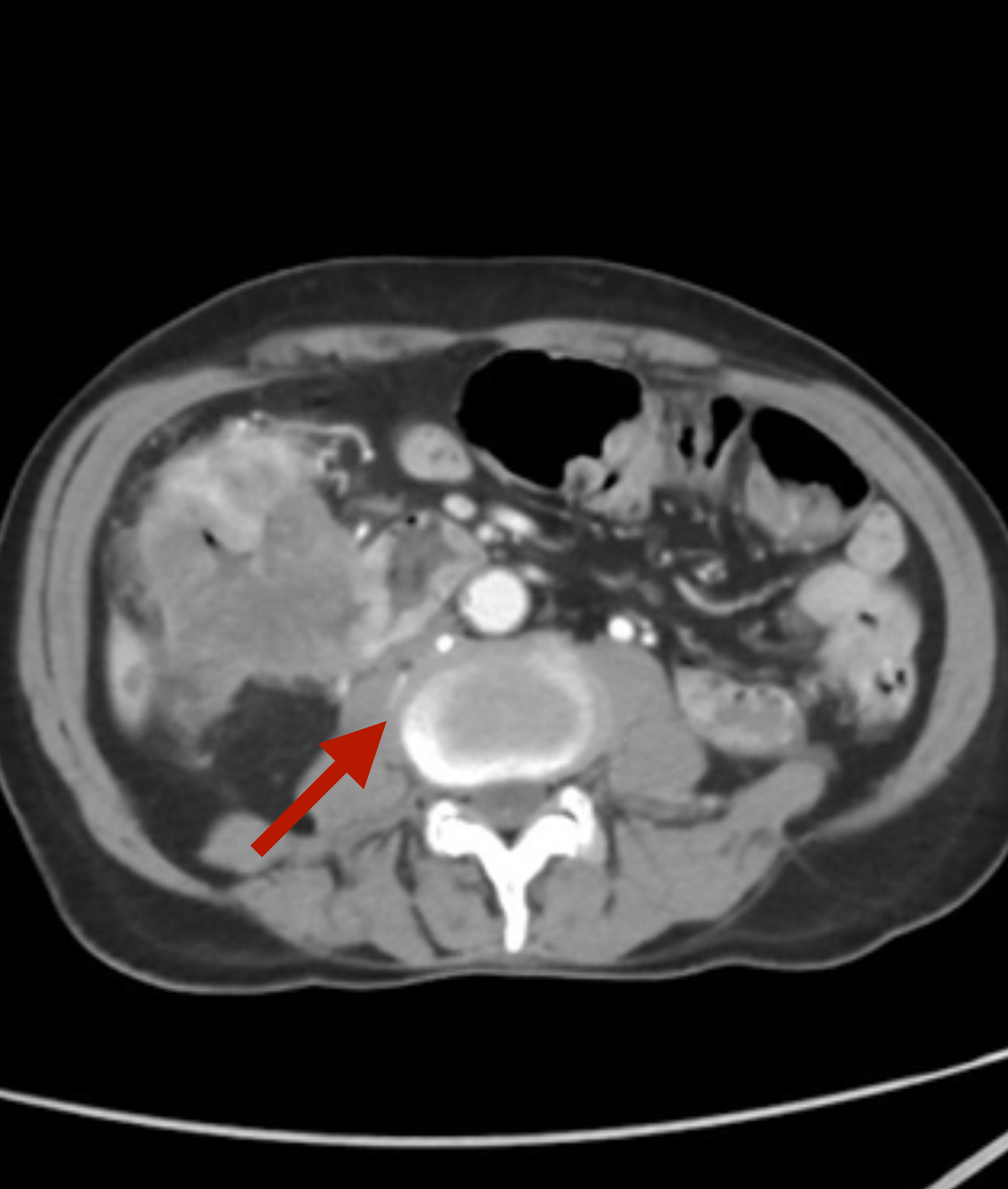Tuesday Poster Session
Category: Colon
P4670 - Advanced Mucinous Adenocarcinoma of the Ascending Colon With Duodenal Invasion: A Rare Presentation

Yeshika Thapa, MD
University of Central Florida
Gainesville, FL
Presenting Author(s)
1University of Central Florida, Gainesville, FL; 2University of Central Florida, HCA Healthcare GME, Gainesville, FL; 3University of Central Florida College of Medicine, Orlando, FL; 4Ibn Sina University for Medical Sciences, Amman, 'Amman, Jordan
Introduction:
Mucinous adenocarcinoma (MAC) accounts for 10–15% of colorectal cancers and is known for its aggressive behavior, higher rates of local invasion, and poor prognosis compared to non-mucinous types. MAC is common in young females, usually presenting in the proximal colon at an advanced stage. Duodenal invasion from right-sided colonic tumors is rare and denotes advanced T4b disease, presenting with vague symptoms of abdominal pain, altered bowel habits, and weight loss.
Case Description/
Methods:
An 81-year-old male with no prior medical or surgical history presented with an 11 kg weight loss over 10 months, severe abdominal pain radiating to the back, constipation, dark urine, intermittent pruritus with skin discoloration and occasional bloody, foul-smelling stool mixed with mucus.
Colonoscopy revealed a fungating mass in the ascending colon. CT imaging confirmed a mass extending to the hepatic flexure with invasion of the duodenum (junction between parts two and three), pericolic fat infiltration, and regional lymphadenopathy without further metastases. The mass also compressed the inferior vena cava, though the patient exhibited no symptoms of venous obstruction.
The patient underwent right hemicolectomy with ileocolic anastomosis, en bloc duodenal resection, primary end-to-end duodenal repair, duodenojejunostomy, and cholecystectomy.
Histopathology showed a 7.5 cm moderately differentiated mucinous adenocarcinoma with duodenal mucosal invasion and macroscopic perforation. Both lymphovascular and perineural invasions were present. All resected margins were clear, with the closest margin (0.5 cm) at the duodenum. All 29 lymph nodes were negative. Additional findings included chronic cholecystitis and fibrofatty obliteration of the appendiceal tip. The final pathological staging was pT4bN0.
Discussion: This case is without traditional risk factors of female gender or young age, while demonstrating the aggressive nature of MAC and its potential for direct invasion into adjacent organs. Duodenal involvement is rare and often signifies locally advanced disease requiring extensive surgical resection. CT imaging played a vital role in preoperative planning by identifying local invasion and vascular involvement. Complete en bloc resection with negative margins, followed by adjuvant chemotherapy, offers the best chance for cure. Early recognition and surgical intervention are critical for favorable outcomes. Our case illustrates the importance of clinical suspicion in the absence of typical risk factors.
Figure: CT scan showing colonic mass with direct invasion of duodenum and IVC compression by tumor.
Figure: Image taken during surgery showing the resected colon including the mass
Disclosures:
Yeshika Thapa indicated no relevant financial relationships.
Bahar Rehan indicated no relevant financial relationships.
Saar Pales indicated no relevant financial relationships.
Bellal Alfar indicated no relevant financial relationships.
Mohammad Abuassi indicated no relevant financial relationships.
Aiman Obed indicated no relevant financial relationships.
Yeshika Thapa, MD1, Bahar Rehan, MD2, Saar Pales, MBBS3, Bellal Alfar, MD4, Mohammad Abuassi, MD2, Aiman Obed, MD, PhD4. P4670 - Advanced Mucinous Adenocarcinoma of the Ascending Colon With Duodenal Invasion: A Rare Presentation, ACG 2025 Annual Scientific Meeting Abstracts. Phoenix, AZ: American College of Gastroenterology.
